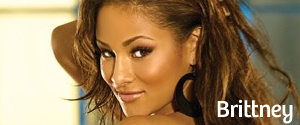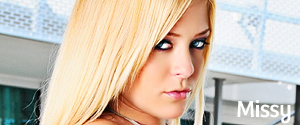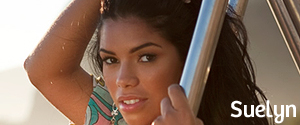Indochine's Top Shelf
Indos Place
Reader Question: How to Get Ahead in This Business Without Degrading Yourself
“With the oversaturation of the market I don’t see many people getting discovered these days. So how does a determined lady go about taking her career from the amateur level to actually working without pulling a Cubana Lust if you know what I mean.”
I think what Joyce is actually asking is, “how do I become a working model in the industry without resorting to booty shaking videos or doing something I might regret later?”
That’s a difficult question, because supply greatly exceeds demand right now in the urban market, which means that even qualified models have to work harder and resort to more drastic measures to get noticed.
The first step is to be really honest with yourself about where you stand compared to the competition. I don’t think a top notch beauty will ever have to turn to booty shaking videos to get noticed. It may take longer, but quality always rises to the surface. Of course, not every girl can be Melyssa Ford. So where does that leave the moderately attractive model with a nice figure who still wants to retain her modesty and excel in the industry?
Well, there are other ways to stand out besides doing booty shaking videos. Model/actress Claudia Jordan is doing quite well right now because she has a gift for gab and has made a name for herself in radio. Rosa Acosta is using her ballet training to produce videos that mix eroticism with classical dance. Today’s urban model has got to be inventive if she wants to set herself apart.
As just one example, some aspiring models are gaining a fan base by making Youtube videos talking about controversial subjects (often times quite passionately). The pretext is the speech, but what viewers are really interested in is how beautiful the girl is. For instance, check out terra904’s speech about the backhanded compliments women of darker complexion often get. Notice the low cut top she has on and the overall aesthetically pleasing quality of the video? Not a mistake. Today’s vixen will have to be clever in ways like this to get noticed.
Another way to set
yourself apart from the crowd is through your photos.
If everybody else is shooting glam in the studio,
take natural light shots at the beach. If everybody
else is oiled down in a thong, wear a one piece. Your
styling also plays a part in this. Amber
Rose stood out because she had a blonde buzz
cut. Now she’s Kanye’s girlfriend.
Finally, you’ve got to buck up and get ready for the
long haul. It simply isn’t going to happen overnight
for most girls these days, and especially the ones
who want to maintain their integrity. But if you
understand that going in, you won’t be discouraged.
Just remember, before there was urban modeling, women
of color who wanted to model simply got an agent and
went out on castings for things like TJ Maxx catalogs
and McDonalds commercials and continued to improve
themselves through strict diet, exercise, speech and
acting classes, etc. -- none of which are degrading
-- until something hit. That's the traditional way to
break into the market, and it still works.
![]()
![]()
Dena Cali - Paradigm
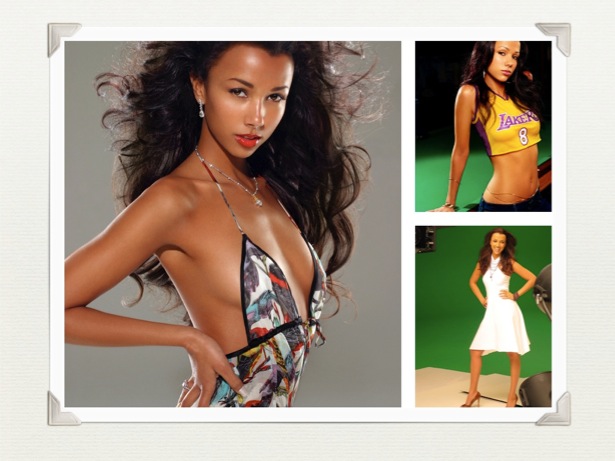

How to Become The Next Big Urban Model in Three Easy Steps
Step 1: Get Quality Photos - Striking, quality photographs are the building blocks of any successful career in modeling. We're not talking iPhone pics taken in your backyard, but professional pics that cast you in the best light possible. Also, it’s important to stand out of from the crowd, so forgot about doing back shots oiled down in a thong. Everyone is doing those type of pics now. Be sexy without giving everything away. This is where discretion comes into play - do you have what it takes?
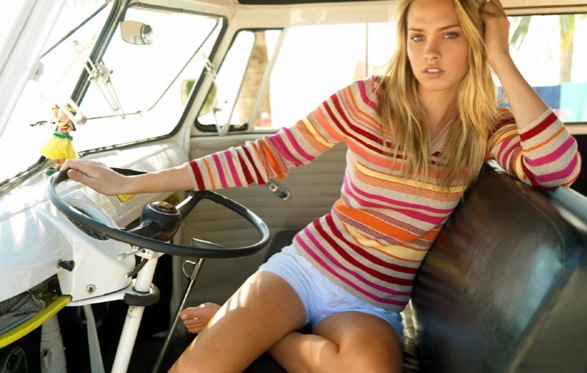
Step 2: Get yourself noticed. This means putting yourself out there on sites like Model Mayhem and submitting to castings for magazines and music videos. It’s easier to get a break in a music video than a magazine. The music video circuit is not as “political,” for lack of a better word, as the magazine circuit. If a casting director like Anissa Williams sees a hot model for a music video, she's not going to condition submission on whether the model gets “friendly” with her. Her main goal is to get the hottest, freshest talent to the artist for the best price. So if you can't catch a break with the magazines, start submitting for music video castings. Dollicia Bryan got her break in Joe's music video long before getting magazine exposure.
These days, with social media being hugely important, just having a Twitter or Facebook page with good images and respectable postings can be enough to build a fan base and interest. If you can muster over 5,000 followers on Twitter someone will eventually take notice. Sean Malcolm of KING and the other major mag editors are all on Twitter, so be careful how you present yourself. People are watching.
Step 3: Be professional. Be humble. Professionalism is really lacking in urban modeling, on all sides of the equation. But you can only worry about yours. Basic things like saying "please" and "thank you," being on time, promptly returning emails/phone calls, and showing humility will go a long way in your favor because so few urban models exhibit these qualities today. The number one reason urban models lose their footing in the industry is that they become divas after even the slightest success and get labeled “difficult to work with.” Even if you book a magazine cover or a Kanye West video, it does not entitle you to romp around like you’re Megan Fox. Being late for a shoot, showing up with bags under your eyes from partying the night before, being overly demanding on set, etc. - these are all things that are considered diva-like behaviour.
Again, this is an area where discretion and sophistication come into play.
That’s it for now. I'll expand upon this article as thoughts come to me.
Managers in Urban Modeling - Part I
What a Manager Does
There is a lot of misinformation where it concerns model management. For instance, many people believe it is a manager's responsibility to book work for their client. That's incorrect. In fact, in California it is illegal for a manager to procure employment for his or her clients under the Talent Agency Act. So then, "what does a manager do?" you're probably asking. A manager's role is to advise and counsel his client to facilitate their advancement in the entertainment industry. It's a very unique role that requires a lot of personal attention. A manager can advise a client on anything that impacts their career, from maintaining the ideal body weight to curbing a drinking problem to taking diction classes.
Ideally, your manager should be fairly well plugged into the entertainment industry. They should have direct lines of communication to the key decision makers in the urban modeling industry: magazine editors, casting directors, photographers, other models, acting coaches, producers, music video directors, etc. I say "ideally" because it is entirely possible for a manager not to have these connections and still serve your interests well. When I met Bria, she knew more people in the urban modeling world than me. (Note: it is the model's responsibility to make sure their connections are re-trained to go their their manager once that relationship begins).
A manager may also be helpful because of his or her particular skill set. At the very least, your manager should be able to write well, communicate effectively, and move fluidly through the world of business. Remember, a manager is a facilitator - they should never get in the way of something good happening for their client. If they do, there's a problem.
Sometimes photographers will take on the role of being a model's manager because they develop a personal relationship with the model. Models should be wary of this. If the photographer does not have the business skills to assist the model, they may wind up being more of a handicap than a help. When I started working with Bria and Koi, I had been practicing law for several years, so I felt perfectly capable of handling any business matter that came their way.
So what should the manager do to assist the urban model, in specific. While certainly not exhaustive, this list is illustrative of some of the tasks a manager can undertake to earn his 15%:
1. Coordinate photo shoots with quality photographers who will help the model stand out from her competition;
2. Send out comp cards with introduction letters to magazine editors, casting directors, etc. regarding his client, as well as creating posts on the relevant message boards about the model;
3. Assist in the development of an online presence, including development of a website, Facebook, Myspace, and Twitter account. This includes recruiting graphic artists and website designers to brand the model;
4. Assist in the maintenance of the model's appearance, including assisting in finding a personal trainer and good hair and make-up artists;
5. Help find a talent agent to book work for the client;
6. Counsel and give input on how to improve the client's career;
7. Help develop new and unique opportunities and venues for client exposure. For example, an urban manager might reach out to the comic book community to see if his client could make a cameo in an issue and thereby introducing her to the comic book audience;
8. Provide transportation (where practical) and moral support at major casting calls and photo shoots, etc.
How to Find a Manager
I cannot tell a lie: it is not easy to find a good manager these days for an urban model. The main reason for this is that the money making opportunities for urban models are scarce and becoming even scarcer by the day as supply far exceeds demand. This is the result of the deluge of aspiring models that appeared on the scene because of Facebook, Myspace, and digital photography. Managers only make a fraction of what their client makes (usually between 10 and 20 percent), and if a model is only making peanuts its obvious the manager won't make much. To make matters worse, many of the "fringe benefits" for urban modeling do not translate to managers. For example, if a celebrity or pro athlete contacts a model and invites her to spend a luxurious weekend in the Bahamas (this happens often for top urban models, believe it or not), how can the manager realize 15% of this??? It's an intangible. Often the benefits of urban modeling fall into this intangible category: gifts (Bria has received several iPods from fans), invitations to the best parties and red carpet events; magazine features, television appearances, etc. These are all things that are great for the model, but don't pay any money and will not benefit the manager (although he may very well be stuck assisting with the coordination of these things).
With that said, good managers, like good business, are where you find them. If a capable individual expresses interest in steering your career, interview them and see if they are worth trying out. Have they managed other models/actresses successfully? Are they intelligent, knowledgeable about the business, well spoken, etc.? If so, you might want to give them a month trial period with no contract to see how things work out.
Getting Quality Photos - Part II
1. Communication and Planning with The Photographer.
A legitimate photo shoot (the type that produces good results) takes planning and preparation. Talk to the photographer before your session and find out what ideas he has in mind for you and convey the things you’d like to try. Agreeing on concepts could get tricky, but it’s important to know what you’re doing before arriving at a shoot. When I first shot with Bria Myles we met once just to test the concept before the shoot actually happened. This was probably overkill, but I hadn’t shot in a while and I wanted make sure the lighting and colors were what I wanted. This made the day of our actual shoot that much easier because we had already squelched any awkwardness on our test run.
I recommend you meet with the photographer at least once before your shoot, just to see what your energy is like together. Photo shoots are partially about chemistry between the photographer and the model, and if you don’t feel comfortable with the photographer it might show in the photos.
A Note Regarding Escorts: Personally, I’m not a fan of escorts – especially boyfriends – on photo shoots. Still, I understand the occasional necessity for them. Again, meeting with/speaking to the photographer beforehand will go a long way toward telling you whether an escort will be necessary. You should also check the photographer's references. If you meet with the fotog and still determine you need an escort, you probably shouldn’t be shooting with them. Also, keep in mind that if you’re partaking in a professional photo session, there will also be a hair person, a make-up artist, and possibly even a stylist present on the shoot with you. With that said, model comfort and safety are paramount on a photo shoot. If having a friend with you will help, the photographer shouldn’t have a problem with it as long as it does not interfere with the model-photographer dynamic.
2. Working Out The Arrangement to Get Your Photos and Determining Photo Usage. This rule is simple: you should demand that all of your photos be delivered on a CD the day of the shoot, especially if you’re paying for the photos. This is the number one problem with photo shoots for models -- they trust the photographer to deliver the pictures and for one reason or another, it doesn’t happen. If a photographer balks at the idea of giving you photos the day of the shoot, it’s probably because he doesn’t want his work out there without his post-processing editing on them. That leads us to the next issue: photo usage.
I see a lot of models demanding photo releases on shoots. This is not the solution to your problem (see my blog entry on model releases), as the standard release gives the photographer more rights than they would have had without one! What you should be more concerned with is how your photos will be used and what control you have over that. This doesn’t require a lawyer. All you need to do is send the photographer an email (that he confirms receiving) making your concerns clear. For instance
“Dear John Fotog,
I look forward to our shoot this weekend. I just want to be clear that we are using these pictures solely for our portfolios and to promote our work. Neither of us will sell the photos or distribute these pictures publicly without the consent of the other. This means that we both have to give the other our consent (not to be unreasonably withheld) before posting photos from our session on the internet or in any other medium.”
This should not be a problem if you paid for your photos. In fact, you should ask the photographer to assign his copyright in the photos to you if you've paid for the session. If the photo shoot is TFP, the photographer may not like having you dictate which photos they can post. However, if the photographer asked you to shoot you should be able to set the terms of your arrangement. If you approached them, you may have to forgo this right. Again, this comes down to working with a photographer you trust and that has good references.
3. Make Sure You Take Versatile Pictures. You can’t book a Target catalog or a McDonald's commercial if you’re oiled down in a thong in every shot. These days, swimsuit and lingerie photos are all the rage, but you’ll need headshots and some lifestyle/editorial shots if you want to get work in something other than a music video and urban magazine. Ask the photographer if he’s willing to at least take some headshots before you get into the more risqué stuff.
4. Avoid Taking Pictures You’ll Regret Later. It’s easy to get caught up in the momentum of a shoot and maybe go further than you intended. Photo shoots may look like a carefree romp, but a serious model is always clear headed about what she’s giving the camera. I can’t tell you how many times I’ve shot with models only to have them later say they hate the photos and don’t want me to use them. This can be avoided by simply looking at the photographer’s results during the shoot and taking a moment to evaluate the direction the shoot is going in. This may not always be easy, but it’s a lot better than ruining your goodwill with a photographer and getting a reputation for being difficult.
5. Make Sure You Have Good Hair & Make Up. This may be the last point on this list, but it is probably the most important. Really good pictures are always a collaborative effort, and a big part of that collaboration is hair and make up. For some reason, a lot of models think they can just go out with a photographer and get results that look like the stuff in Allure magazine with no hair and make up on set. For the most part, it doesn't work that way. Finding a quality hair stylist and make up person for your shoot is just as important, if not more, than getting a good photographer. If a photographer has no plans to even have hair and make up present on the shoot, you may want to reconsider. When evaluating hair and make up it is critical to find out whether they have worked on models with attributes similar to you with success.
